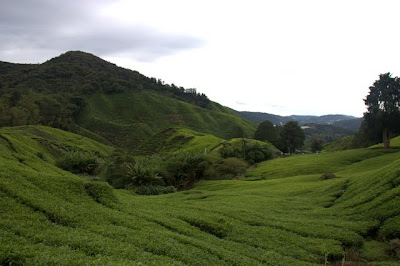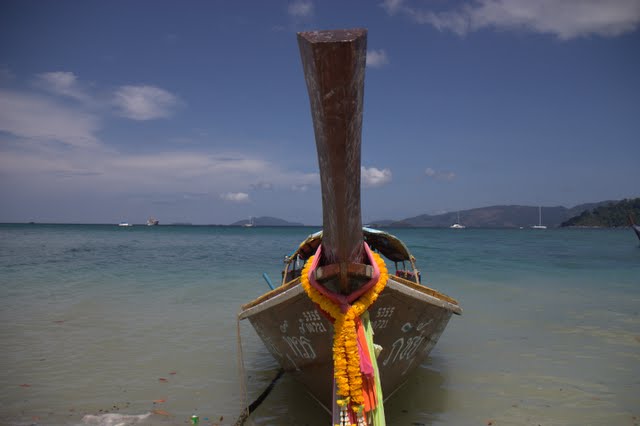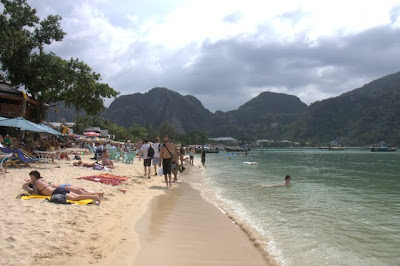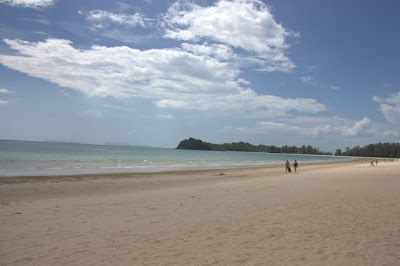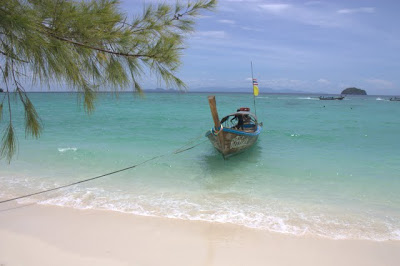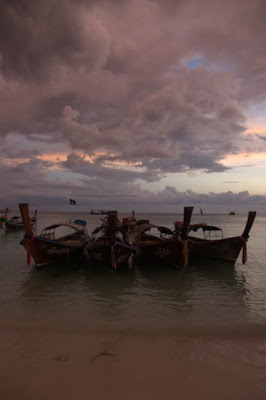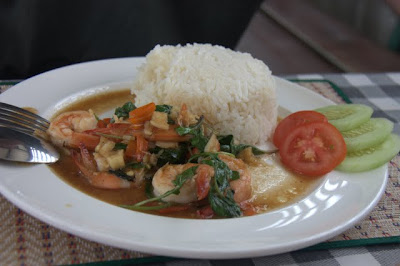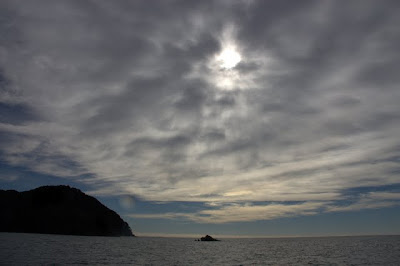Scenes from Nelson (and Mapua)
Nelson lies on the central northern coast of New Zealand’s South Island. It is supposed to be the sunniest place in all of New Zealand. And it was for our first day, providing the perfect backdrop to relaxing next to our campervan, drinking our newly acquired limited edition Sprig & Fern Harvest Pilsner and chopping up fresh veggies from Nelson’s Wednesday farmers market for salsa. Day two, the rain started (and pretty much didn’t let up for the rest of our days in New Zealand, save for a brief reprieve in Rotorua). Good thing Nelson is a quaint little town with historic old buildings housing shops and cafes. And furthermore that it lies in a hop growing region and has a thriving craft beer culture (like at the Free House, above. Craft beer in a church – we Pittsburghers can get on board with that). We forgave Nelson for its transgression in raining on us in the sunniest part of New Zealand.
By the way, if you are ever in New Zealand and you’re thirsty, you may want to check out some of the more notable beers we tried. It’s a hard job vetting beers but someone’s got to do it. New Zealand excels in hoppy pilsners and pales ales. We really liked Sprig & Fern’s Harvest Pilsner (from Nelson, see below); Harrington’s the Rogue Hop Organic Pilsner (from Christchurch, recommended by a neighbor Ohioan now living in Motueka); Emerson Organic Pilsner (from Dunedin); Townsend Old House ESB on cask (from Upper Moutere, near Nelson); and the Moa range of beers (from Marlborough).

I.loved.this.beer. I say loved in the past tense because unless I happen to be in Nelson again in April, this one bottle we picked up from the brewery is it for me. The Sprig & Fern is a local brewery with over 20 craft beers. The Harvest Pilsner was released days before we arrived and they expected to sell out within the week. It was crammed full of local hops, brewed on the very day they were picked. The result is a hoppy, crisp pilsner with an aromatic fruity aroma - sort of like the sauvignon blanc of beers. I was in love; Sean thought it was good but had too many fruit notes for him.
Riders on the Storm: Two Weeks in Rainy Malaysia
The island of Langkawi in Malaysia is only an hour and half ferry ride away from Ko Lipe, Thailand. When we left Thailand, it was sunny and gorgeous. As soon as we crossed the border into Malyasia (which, by the way, was our third border crossing by water), we were greeted by the storm cloud above. And that’s pretty much how it went during our next two weeks in Malaysia.
The near constant rain, combined with our excitement to leave Asia behind and start a new adventure, meant that Malaysia didn’t get our full attention. We found Malaysia to be pleasant, but not overly exciting, probably half owing to our attitude at the time and the other half owing to Malayisia itself. Malaysia is the most developed country we visited in Southeast Asia, although there was no mistaking that we were still a long way from home. It also was sort of a culmination of our travels, reflecting religions, cultures and ethnicities we had encountered previously on the trip (the Cape Malay in South Africa, Indians in India, and Asians and Muslims in general).
It had been a long time since we encountered a country that is so ethically diverse. About half of the population of Malaysia are Malays, who, according to the Malaysian constitution, are Muslims who practice Malay customs and culture. The government grants certain non-Malay indigenous peoples such as ethnic Thais, Khmers, Chams and natives of Sabah and Sarawak a special “bumiputra” status. These citizens makes up 11% of the population and get certain rights other minorities do not have, such as the 23.7% percent of the population who are of Chinese descent and the 7.1% of the population who are of Indian descent. While the ethnic groups exist in relative harmony, they don’t mix much and there is resentment from the Chinese and Indians, many of whom have been in Malaysia for generations.
All of these ethnicities present in Malaysia means there is a broad array of architecture (including some with a British influence left over from the days Malaysia was a British colony) and most importantly, food. We struck out with our attempts to find delicious Chinese food (I’m sure it’s out there, we just stumbled upon a bad tourist restaurant when we were famished) but our reunification with Indian food did not disappoint, nor did our foray into Malaysian food. Maybe all of this variety means Malaysia is closer to home afterall.
Langkawi
Our quick two night stay on Langkawi, an island slightly more upscale than the backpacker havens we just left behind in Thailand, was mostly spent on the relatively affordable Cenang Beach, where we fit in a trip to the beach before we were rained out. Probably the most exciting thing that happened to us in Lankawi was our realization that we had spent two days living an hour in the past. We didn’t have a guidebook for Malaysia, and no one told us there was one hour difference in time between Thailand and Malaysia. The locals were just as confused as we were when we couldn’t figure out where the 2:30 ferry to Georgetown was. They kept telling us it left; we kept telling them that it couldn’t have because we were sitting at the terminal the whole time. Confusion ensued until we realized that oops, it was 3:30.
Georgetown
Georgetown is known for its UNESCO World Heritage buildings and multi-cultural food. We fit in a pretty good Indian meal and checked out the buildings around town before torrential downpours put an end to our exploration.
Perhentian Islands
We made a major detour over to Malaysia’s eastern coast because we heard the Perhentian Islands were fabulous and not to be missed. We spent 6 nights on Perhentian Cecil, the smaller, more developed island of the two. (More developed being relative, of course; the Perhentians are very low-key with just a sprinkling of locally owned restaurants and general type stores in shack-like buildings). Unfortunately (and I’m sounding like a broken record here, I know) we were plagued by storms again, making our decision to stay in a real concrete room at the relatively expensive Shari-La Resort instead of one of the cheap dilapidated shacks a good one. Perhentian Cecil is small. There’s not a lot to do except snorkel, dive, boogie board, and sun at the beach. We worked on our Advanced PADI scuba certification with Turtle Bay Divers while we were there. The weather progressively declined, but we were able to fit all of our required dives in. The constant runoff made the conditions were horrible – so much that we couldn’t even see our hands during our last dive, let alone any fish – which is a shame, because the diving is supposed to be amazing. This just means we’ll have to go back someday. Oh shucks, force me to go back to a beautiful lush tropical island with blue, blue waters. I just hope our return trip won’t require a speedboat ride where us and our luggage get soaked from the pounding rain and the boat is trying to outrun a giant wave about to overtake us on our way to shore. (By the way, March normally is well outside of monsoon season. All of the locals told us the weather was very unusual – just our bad luck).

Our most favorite meal in Malaysia - roti canai. Much different than the roti in India or Thailand, this roti is more fluffy and slightly sweet. Malays eat it for breakfast dipped in a spicy curry sauce.
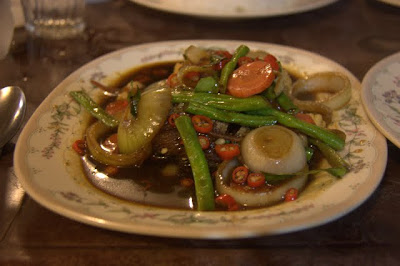
Chicken paprik from Eawan's Restaurant, which was in rain-avoiding sprinting distance from our chalet in the back of Shari-la's resort. Good thing, too, because Eawan is super friendly and his food is tasty.

We stayed at Coral Bay mostly for its great sunsets, which disappointingly never came out in full force during our stay. Dinner on the beach was still enjoyable.

Gorgeous. (But also really rough, which necessitated us trekking up over the hill - sometimes with our scuba equipment - to board the dive boat from the calmer Coral Bay).
Cameron Highlands
Another highlight of our Malaysia travels was the irresistibly green Cameron Highlands. There are crops all over Cameron Highland’s higher elevations like hydroponic strawberries, but the one the Cameron Highlands is most known for is tea. The green blanket of tea bushes over rolling hills is a beautiful sight. We toured the BOH tea plantation and had a cuppa; chowed down on some tasty Malay and Indian food; and hiked through a mossy forest.

We loved the super cheap Indian/Malay restaurants lined up on the main road. We especially liked these ayom (rice pancake like things dipped in coconut milk).

Nasi Lemak, a Malay specialty. It is rice cooked in coconut milk, topped with a hot chili sauce, egg, sardines and cucumber.
Kuala Lumpur
With 1.4 million people, Kuala Lumpur is Malaysia’s largest city and it is also its capital. By the time we rolled into Kuala Lumpur, we were over Asia and ready for New Zealand. Sorry, KL, I’m sure you’re a great city, but you didn’t immediately engage us and so that was that. While we were there, we checked out Chinatown; went to KLCC Suria, a huge mall; and went to the viewing platform of the Petronas Twin Towers (a bit of a snore especially since they’ve already been topped and we’ve been there, done that).
Four Thai Islands
For 24 days in March, we island hopped our way from Thailand to Malaysia, criss-crossing the mainland twice to go from the Gulf of Thailand over to the Andaman Sea and back over to the South China Sea. There was a stretch of 12 straight days where we didn’t hit the mainland, not even to cross the border, moving between islands by ferries of various sizes and shapes. We hit four islands during the Thailand portion: Ko Tao, Ko Phi Phi, Ko Lanta, and Ko Lipe. We had been looking forward to lazy days, and for that, the Thai islands didn’t disappoint, which is why I am able to sum up our two weeks in one post. We had next to zero cultural interactions, and there’s only so many ways to describe our beach bum lives. We visited the islands during the high season and found ourselves surrounded by tourists. Unfortunately, all too many of them were of the young, partying variety, the types to walk around shirtless or hanging out of a bikini hooting and hollering in a rather conservative (and in some of the islands, Muslim) society. The tourism industry is all too eager to cater to these tourists, with shoddily constructed cheap construction tacked up haphazardly next to sewage and water pipes jutting out of the ground, tourist agencies and shops selling the same crap, and most annoyingly, pounding bass music at night. I didn’t expect to be the only ones around, but finding decent accommodation in a quiet location became the bane of our existence. Everything on the islands is more expensive than the mainland and food and accommodation is not nearly as good. But we managed to find some good stuff, we just had to look a little harder. Plus it’s hard to be cranky when the water’s warm and crystal clear, the sand is white and fine, and the sun is shining. Here’s our take (and photos, of course) from the four islands we visited:
Ko Tao
Despite spending 5 nights on Ko Tao, I couldn’t tell you a thing about the island other than it’s great at churning out certified scuba divers at dirt cheap prices. We went there with a one track mind and left after successfully getting our PADI Open Water scuba certification from Buddha View Divers for about $325 a person. Other than that, we saw diddly squat. While we could have made more of an effort to explore, we felt lazy after days spent doing homework for our class and mastering new skills out in the water. So that’s all I have to say about that. (Spoiler alert: we ended up getting our advanced diving certification through Turtle Bay Divers on the Perhentian Islands in Malaysia. More on that later, but if I had to do it over again, I’d probably would have gotten my open water certification through Turtle Bay as well since it was actually cheaper similarly priced [Sean tells me I’m remembering wrong], classes are more intimate and less like a factory, and our instructor Harun was awesome. Nevertheless, the diving schools on Ko Tao get the job done efficiently).
Ko Phi Phi
Ko Phi Phi: definitely winning the award from my least favorite Thai island. You may remember Phi Phi as it was destroyed by the tsunami in 2004. Seven years later, many of the signs of the tsunami are gone, save for new signs displaying the evacuation route. I’m not sure if it was this bad pre-tsunami, but today, it has little charm and it’s crammed full of tourist agencies, trinket shops and clubs. Most people that are there seem to be there to party. In Phi Phi’s defense, we only were there for 2 days and didn’t get a chance to explore beyond the tourist-packed village close to the ferry pier. It rained rather hard while we were there, pinning us in our room and cancelling the boat outing we had planned. And it is a beautiful island, with two crescent shaped bays curving inwards to meet each other. But overall it’s not my cup of tea.
Ko Lanta
Ko Lanta may be the least tropical of the islands we visited, but it probably was my favorite. For starters, it’s bigger than some of the others (but easily circumnavigated in a scooter), meaning that it is less crowded and more spread out. We stayed on Klong Khong Beach on the central western coast, but explored all over the island from the popular Klong Dao Beach in the northwest to the secluded beaches and national park down a dirt road at the southern tip to the less beachy but quaint east coast where the locals live. As we went south in Thailand, the Thai Muslim culture became more predominant, and Muslims operate most of the guesthouses and restaurants on Lanta. The longer we stayed, the more we discovered little hidden gems like Shanti Shanti’s homemade ice creams and sorbets (we tried lime and papaya, chili mango and cinnamon) or Bulan Lanta’s bargain homemade muesli. Our favorite past time on Ko Lanta was sunset watching; there are great sunsets every night up and down Lanta’s long western coast.
Ko Lipe
When you’re daydreaming of escaping to the Thai islands at work, Ko Lipe might be the closest to the picture you have in your mind. Only an hour and half to the Malaysian border by boat and in the middle of a marine reserve, it’s less developed and a little harder to get to than the more northern islands. There’s no pier; the ferry picks up and drops off in the middle of the bay. The water was the bluest and clearest of any of the Thai islands we visited and the sand the whitest and softest. Unfortunately, some of those fabulous beaches can also be strewn with a little too much garbage for my liking. Some people fear Ko Lipe is turning into a mini Ko Phi Phi. Like Ko Phi Phi, motor traffic is prohibited on much of Ko Lipe, and any development that is occurring is shortsighted. It’s also a tad more expensive than even Ko Phi Phi (although we managed to find a decent hut for under $20, albeit without a sink). Hopefully, development won’t run amok, as it is a beautiful gem.
Happy Mother’s Day
Happy Mother’s Day to our moms. We’re sorry we missed Mother’s Day two years in a row! But we’re really excited to see you again soon.
Scenes from Abel Tasman National Park
It’s so easy your grandmother could do it, the guy at the Motueka Top 10 told me when I inquired about the most popular hike in Abel Tasman National Park. While a couple of lazy non-hikers like Sean and me managed the 5.4 mile hike from Bark Bay to Anchorage Bay without any troubles (save for a few grumbles along the lines of hills? no one told me there was going to hills!), I’m not sure I can picture my grandmother trucking along the trail (may she rest in peace). Perhaps his statement should have been qualified that it was so easy a New Zealand grandmother could do it, judging by the sweet 90-something couple we chatted with on a hiking trail in Arrowtown. But what do I know? We passed the 90 year olds in Arrowtown, but a 4-year-old girl kept smoking us on the trail at Abel Tasman.
Abel Tasman National Park, located on the South Island’s northeast coast, is New Zealand’s smallest national park but it is packed to the gills with beautiful unblemished coastline. There are no roads inside the park, so we took a water taxi along the coast to get to our hiking destination and were blessed with one of our few sunny days in New Zealand.














